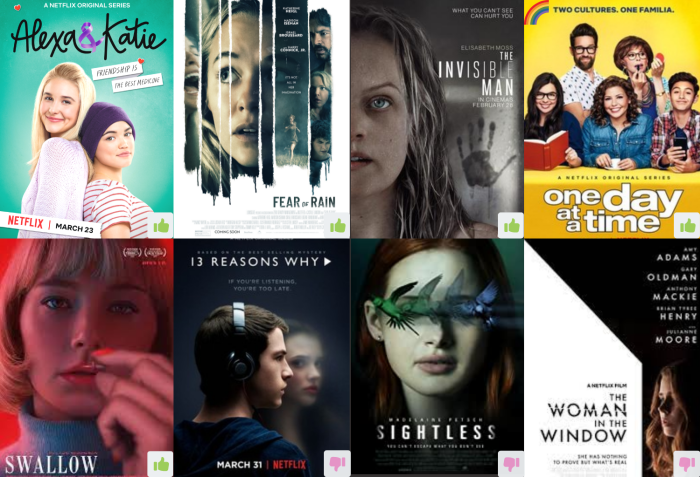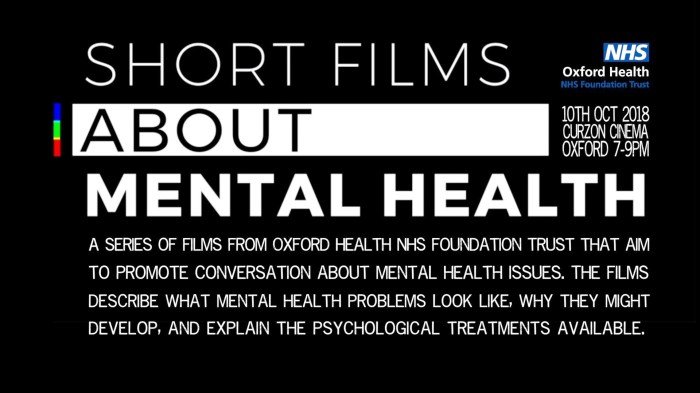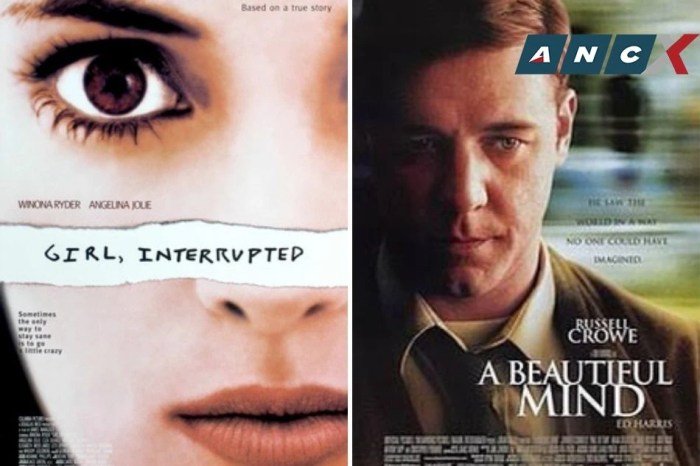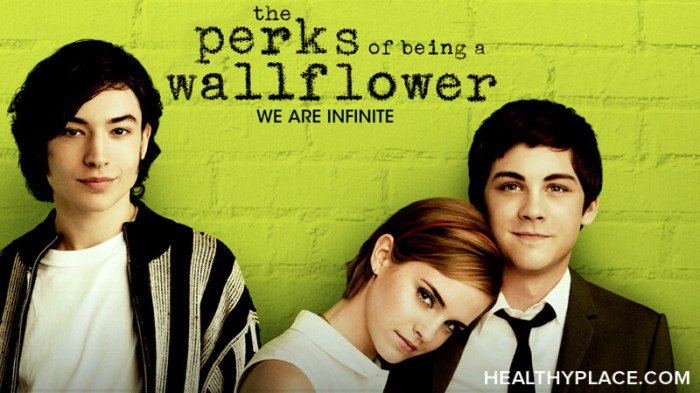Film mental health is a multifaceted topic that explores the complex relationship between cinema and mental well-being. It examines how films can raise awareness about mental health issues, challenge societal stigmas, and provide a platform for advocacy. From the realistic portrayal of mental illness in independent films to the exaggerated representations in Hollywood blockbusters, cinema offers a unique lens through which to analyze and understand mental health.
This exploration delves into the various ways films impact our understanding of mental health, both positively and negatively. It examines the potential therapeutic value of film for individuals struggling with mental health challenges, and explores how film can be used as a tool for research and advocacy.
By analyzing the representation of mental illness in film, we can gain a deeper understanding of how societal perceptions shape our understanding of mental health and its impact on individuals and communities.
The Impact of Film on Mental Health

Film has become a powerful medium for addressing mental health issues, raising awareness, and promoting understanding. By portraying diverse characters struggling with mental illness, films can offer a glimpse into the realities of these experiences, fostering empathy and challenging stigmas.
Raising Awareness About Mental Health Issues
Films can bring mental health issues to the forefront of public discourse, sparking conversations and prompting viewers to learn more.
- By showcasing characters navigating mental health challenges, films can expose audiences to the complexities of these conditions, demystifying them and promoting understanding.
- Films can also raise awareness about specific mental health conditions, such as anxiety, depression, and post-traumatic stress disorder (PTSD), by accurately depicting their symptoms and impact on individuals.
- For example, the film “Silver Linings Playbook” (2012) portrays a character struggling with bipolar disorder, providing a nuanced portrayal of the condition and its effects on personal relationships and daily life.
Destigmatizing Mental Illness
Films can play a significant role in challenging negative stereotypes and misconceptions surrounding mental illness.
- By portraying characters with mental illness as complex individuals with strengths and vulnerabilities, films can humanize these experiences and challenge the notion that mental illness is a sign of weakness or flaw.
- Films can also highlight the importance of seeking help and support, showcasing the positive impact of treatment and recovery.
- The film “Inside Out” (2015) provides a unique and relatable perspective on emotions, including sadness, fear, and anger, helping viewers understand the importance of accepting and managing these emotions.
Providing a Platform for Mental Health Advocacy
Films can serve as a powerful platform for mental health advocacy, raising awareness about critical issues and inspiring action.
- Films can advocate for greater access to mental health resources, highlighting the need for affordable and accessible treatment options.
- Films can also promote mental health literacy, educating viewers about the signs and symptoms of mental illness and encouraging early intervention.
- The film “The Perks of Being a Wallflower” (2012) explores themes of social isolation, depression, and trauma, encouraging viewers to reach out for support and seek help when needed.
Portrayals of Mental Illness in Film

Films have become a powerful medium for exploring various aspects of human experience, including mental health. However, the portrayal of mental illness in film has often been fraught with inaccuracies, stereotypes, and sensationalism. This section delves into the common tropes and stereotypes associated with mental illness in film, analyzes how films often portray mental illness in a sensationalized or inaccurate way, and discusses the potential negative consequences of these portrayals.
It also compares and contrasts how different genres of film portray mental illness.
Common Tropes and Stereotypes
The portrayal of mental illness in film is often characterized by a reliance on common tropes and stereotypes. These tropes can perpetuate harmful misconceptions about mental illness and contribute to stigma.
- The “Crazy” Villain:This trope depicts individuals with mental illness as inherently dangerous and unpredictable, often portraying them as villains or antagonists. This stereotype reinforces the idea that people with mental illness are a threat to society, contributing to fear and prejudice.
For example, in the film “The Silence of the Lambs,” the character of Hannibal Lecter, a brilliant but cannibalistic psychiatrist, is depicted as a terrifying embodiment of mental illness.
- The “Tragic” Hero:This trope portrays individuals with mental illness as victims of their condition, often depicting them as helpless and unable to cope with their struggles. While this trope may aim to evoke sympathy, it can also reinforce the idea that people with mental illness are incapable of leading fulfilling lives.
For example, in the film “A Beautiful Mind,” the character of John Nash, a brilliant mathematician suffering from schizophrenia, is depicted as a tragic hero who struggles to overcome his illness.
- The “Unstable” Character:This trope portrays individuals with mental illness as unpredictable and erratic, often using exaggerated behaviors and mannerisms to depict their instability. This stereotype can reinforce the idea that people with mental illness are unpredictable and dangerous, contributing to fear and avoidance.
For example, in the film “Psycho,” the character of Norman Bates, a motel owner with a complex mental illness, is depicted as a terrifying and unpredictable figure.
Sensationalized and Inaccurate Portrayals
Many films portray mental illness in a sensationalized or inaccurate way, often focusing on the most dramatic and extreme aspects of the condition. This can lead to a distorted understanding of mental illness and contribute to stigma.
Films can offer a powerful lens into the complexities of mental health, prompting discussions and raising awareness. If you’re seeking support for your own mental well-being, consider exploring resources like OU Health MyChart , which provides convenient access to medical records and communication with healthcare providers.
By understanding the characters and narratives in film, we can gain a deeper appreciation for the challenges and triumphs associated with mental health.
- Oversimplification of Mental Illness:Films often present mental illness as a simple, singular condition with clear-cut causes and solutions. This oversimplification ignores the complexity and diversity of mental illness, leading to a superficial understanding of the condition.
- Emphasis on Violence and Danger:Films often portray individuals with mental illness as violent and dangerous, reinforcing the stereotype that they are a threat to society. This can lead to fear and prejudice, making it difficult for individuals with mental illness to seek help or support.
- Focus on Extreme Behaviors:Films often focus on the most extreme and unusual behaviors associated with mental illness, neglecting the everyday experiences and struggles of individuals with mental illness. This can lead to a distorted understanding of the condition, making it seem more frightening and less relatable.
Potential Negative Consequences
The inaccurate and sensationalized portrayals of mental illness in film can have a number of negative consequences, including:
- Increased Stigma:Films that perpetuate stereotypes and inaccuracies about mental illness can contribute to stigma and discrimination against individuals with mental illness.
- Deterrence from Seeking Help:Films that portray mental illness as dangerous or debilitating can discourage individuals from seeking help for mental health concerns.
- Misunderstanding and Misdiagnosis:Films that oversimplify mental illness can lead to misunderstandings and misdiagnoses, making it more difficult for individuals to receive accurate and effective treatment.
Genre Differences in Portrayal
Different genres of film often portray mental illness in distinct ways. For example:
- Horror Films:Horror films often use mental illness as a source of terror and suspense, portraying individuals with mental illness as monstrous or threatening. This can contribute to the stereotype of mental illness as dangerous and unpredictable.
- Drama Films:Drama films often explore the personal struggles and experiences of individuals with mental illness, providing a more nuanced and realistic portrayal of the condition. However, even drama films can sometimes fall into the trap of oversimplification or sensationalism.
- Comedy Films:Comedy films often use mental illness as a source of humor, often portraying individuals with mental illness as eccentric or quirky. This can contribute to the stereotype of mental illness as something to be laughed at or dismissed.
The Therapeutic Value of Film

Film has the power to transport us to different worlds, introduce us to diverse characters, and evoke a wide range of emotions. This ability to tap into our emotional landscape can be particularly beneficial for individuals facing mental health challenges.
By providing emotional catharsis, fostering connection, and facilitating self-reflection, film can serve as a valuable tool for healing and personal growth.
Emotional Catharsis and Understanding
Film can provide a safe space for individuals to process and release difficult emotions. Watching characters grapple with similar struggles can offer a sense of validation and understanding, reminding viewers that they are not alone in their experiences. For example, a person dealing with anxiety may find solace in watching a character overcome their fear in a film.
This vicarious experience can help them develop coping mechanisms and build resilience.
Connection and Community
Film can foster a sense of connection and community among individuals facing similar challenges. Shared experiences, portrayed authentically on screen, can create a sense of belonging and solidarity. For example, a film depicting the lived experiences of individuals with depression can help viewers feel less isolated and more understood.
Self-Reflection and Personal Growth
Film can serve as a catalyst for self-reflection and personal growth. By exploring the motivations, struggles, and triumphs of characters, viewers can gain new perspectives on their own lives and values. The characters’ journeys can provide insights into their own behaviors, thought patterns, and emotional responses.
Films often explore mental health in compelling ways, shedding light on the complexities of human experience. These narratives can provide valuable insights into the challenges individuals face, as seen in the recent film “The Silent Patient.” Prisma Health Greer Memorial Hospital ( prisma health greer memorial hospital ) is a facility that provides comprehensive mental health services, offering hope and support to those in need.
Such institutions, alongside the power of film, play a crucial role in raising awareness and fostering understanding of mental health issues.
Film as a Therapeutic Tool
Film has been increasingly used as a therapeutic tool in clinical settings. Therapists use film to facilitate discussion, promote empathy, and provide a shared language for exploring emotional experiences. For example, films like “Inside Out” have been used to help children understand and manage their emotions, while films like “Silver Linings Playbook” have been used to facilitate conversations about mental illness and recovery.
Film as a Tool for Mental Health Research

Film has emerged as a powerful tool for understanding and exploring the complexities of mental health. Its ability to capture human emotions, experiences, and societal dynamics offers a unique lens for studying the impact of mental health on individuals and society.
By analyzing film narratives, researchers can gain insights into the lived experiences of people with mental illness, the stigma surrounding mental health, and the effectiveness of various treatment approaches.
Insights into Lived Experiences
Films can provide a window into the subjective experiences of individuals living with mental illness. By portraying the challenges, triumphs, and struggles of characters with mental health conditions, films offer valuable insights into the realities of mental illness. For example, the film “Silver Linings Playbook” depicts the journey of a man with bipolar disorder, showcasing his struggles with managing his condition and navigating social interactions.
Similarly, “A Beautiful Mind” portrays the life of a brilliant mathematician struggling with schizophrenia, offering a glimpse into the complexities of the disease and the impact it has on individuals and their relationships.
Evaluating Treatment Effectiveness, Film mental health
Films can also be used to evaluate the effectiveness of different mental health treatments. By examining how characters respond to therapy, medication, and other interventions, researchers can gain insights into the potential benefits and limitations of various treatment approaches. For example, the film “The Perks of Being a Wallflower” depicts the positive impact of therapy on a young man struggling with anxiety and depression.
By analyzing the character’s progress throughout the film, researchers can study the effectiveness of therapeutic interventions in addressing mental health challenges.
Examples of Film-Based Research Studies
Several research studies have utilized film as a tool to explore mental health issues. For instance, a study published in the journal “Psychiatry Research” examined the portrayal of depression in popular films and found that films often depict depression as a “character flaw” rather than a mental illness, potentially contributing to stigma and misconceptions.
Another study, published in the journal “Qualitative Health Research,” used film analysis to explore the experiences of women with postpartum depression, highlighting the emotional and social challenges they face.
Filmmaking and Mental Health

Filmmaking can be a powerful medium for exploring mental health issues, but it also presents unique challenges for those involved in the creative process. Filmmakers often grapple with the sensitive nature of mental illness, the need to portray it authentically, and the potential impact their work may have on audiences.
The Challenges Faced by Filmmakers Working on Mental Health Projects
Filmmakers working on projects related to mental health often face a number of challenges, including:
- Finding the right balance between accuracy and entertainment: It’s crucial to portray mental illness accurately and avoid perpetuating harmful stereotypes. However, films also need to be engaging and entertaining to reach a wider audience. Striking this balance is essential for creating films that are both informative and impactful.
- Navigating the stigma surrounding mental illness: Mental illness is still often stigmatized, and filmmakers may face resistance from studios, distributors, or even audiences when trying to tell stories about it. This can make it difficult to get funding, secure distribution, or even find actors willing to take on roles that involve portraying mental health challenges.
- Avoiding sensationalism and exploitation: Mental illness can be a sensitive topic, and it’s important to avoid sensationalizing or exploiting it for entertainment value. Filmmakers must approach these themes with respect and sensitivity, ensuring that their work is not exploitative or disrespectful to those living with mental health conditions.
The Creative Process and Mental Health Experiences
The creative process can be both therapeutic and challenging for filmmakers with mental health experiences. On one hand, filmmaking can be a powerful outlet for expression and self-discovery, allowing individuals to process their own emotions and experiences through their work.
On the other hand, the demands of filmmaking can be overwhelming, and the pressure to create can exacerbate existing mental health challenges.
- Therapeutic aspects: Filmmaking can provide a safe space for filmmakers to explore their own mental health experiences, allowing them to process difficult emotions and connect with others who may share similar struggles. The act of creating can be cathartic and empowering, helping individuals to find meaning and purpose in their lives.
Film can be a powerful tool for exploring mental health, offering a glimpse into the struggles and triumphs of individuals navigating various challenges. Understanding the nuances of mental health is crucial, and resources like curana health provide valuable information and support.
By addressing mental health concerns openly and honestly, both in film and in real life, we can create a more compassionate and understanding society.
- Challenges: The creative process can be demanding and unpredictable, requiring filmmakers to be resilient and adaptable. This can be particularly challenging for those with mental health conditions, who may experience heightened anxiety, stress, or depression. The pressure to succeed, the uncertainty of the industry, and the constant need to be creative can all contribute to mental health challenges.
Empowering Filmmakers to Share Their Stories
Film can be a powerful tool for empowering filmmakers to share their own stories and experiences. By using film as a platform for personal expression, filmmakers can challenge stereotypes, raise awareness about mental health issues, and inspire others to seek help.
- Personal narratives: Many filmmakers have used their work to share their own experiences with mental illness, creating films that are both personal and universal. These films can help to destigmatize mental illness, provide a sense of validation for those struggling, and inspire others to seek help.
- Community building: Filmmaking can also be a way for filmmakers to connect with others who share similar experiences. By creating films about mental health, filmmakers can build a community of support and understanding, fostering a sense of belonging and shared purpose.
Filmmakers Advocating for Mental Health Awareness
Several filmmakers have used their work to advocate for mental health awareness, challenging stigma and promoting understanding.
- John Green, author of the bestselling novel “The Fault in Our Stars,” has been a vocal advocate for mental health awareness, using his platform to raise awareness about mental illness and encourage open conversations about these issues. His novel, which explores themes of cancer, love, and loss, has resonated with millions of readers and helped to destigmatize conversations about death and dying.
Green’s work has also inspired the creation of the “Mental Health Awareness Week” in the United Kingdom, which is an annual event that aims to raise awareness of mental health issues and promote positive mental health.
- Ava DuVernay, director of the critically acclaimed film “Selma,” has spoken openly about her own experiences with anxiety and depression. DuVernay has used her platform to encourage open conversations about mental health and to advocate for greater access to mental health care.
She has also created a foundation, the “Array Now,” which supports filmmakers from diverse backgrounds and promotes mental health awareness.
- Ryan Murphy, creator of popular television shows like “Glee,” “American Horror Story,” and “Pose,” has been praised for his portrayal of mental health issues in his work. Murphy has often featured characters struggling with mental illness, including anxiety, depression, and bipolar disorder, and has done so with sensitivity and authenticity.
His work has helped to normalize conversations about mental health and to challenge the stigma surrounding these issues.
Conclusion

The relationship between film and mental health is dynamic and complex. As we continue to explore this intersection, we gain a deeper understanding of the power of cinema to raise awareness, challenge stigmas, and promote mental well-being. By engaging with films that address mental health, we can foster empathy, challenge misconceptions, and contribute to a more informed and supportive society.
Ultimately, film can serve as a catalyst for positive change, helping to destigmatize mental illness and encourage open dialogue about mental health challenges.
Question & Answer Hub: Film Mental Health
What are some examples of films that have positively impacted mental health awareness?
Films like “Silver Linings Playbook,” “The Perks of Being a Wallflower,” and “Inside Out” have been praised for their realistic and sensitive portrayals of mental illness, sparking conversations and raising awareness about mental health challenges.
How can film be used as a tool for mental health research?
Researchers can use film to study the impact of mental health on individuals and society, analyze the lived experiences of people with mental illness, and evaluate the effectiveness of mental health treatments.
Are there any specific film genres that tend to portray mental illness in a more accurate way?
While there’s no definitive answer, independent films and documentaries often offer more nuanced and realistic portrayals of mental illness compared to mainstream Hollywood films.